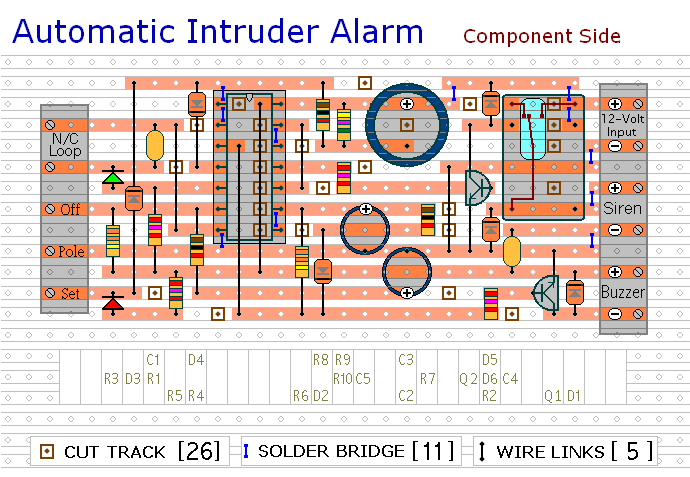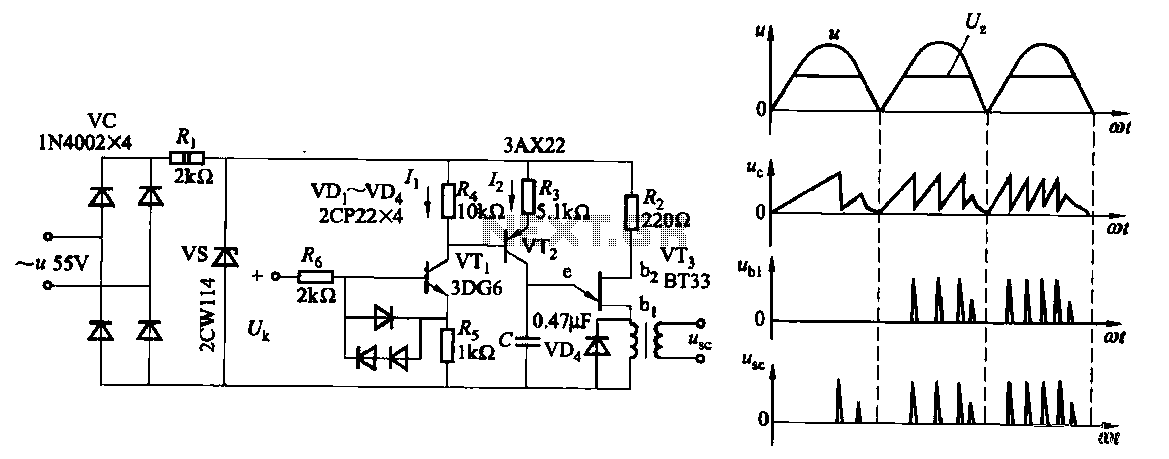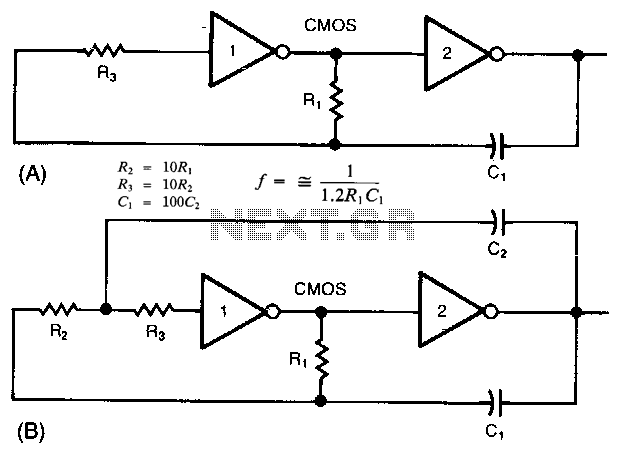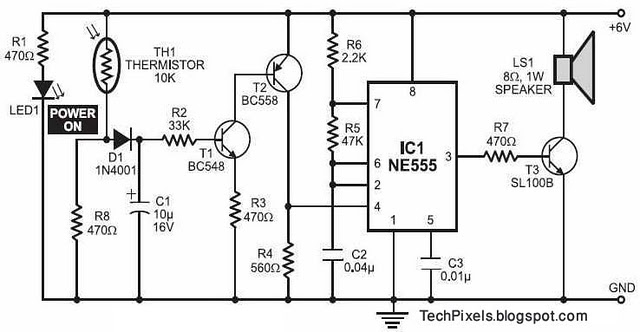
simpler cmos single zone alarm

This circuit includes automatic exit and entry delays, a timed bell cut-off, and a system reset feature. It is designed to work with standard normally-closed input devices such as magnetic reed contacts, micro switches, foil tape, and passive infrared sensors (PIRs). Additionally, a simple modification allows for the integration of a normally-open trigger.
The described circuit operates by managing the timing and control of various entry and exit points in a security system. The automatic entry and exit delays are essential for providing users sufficient time to enter or exit the monitored area without triggering an alarm. The timed bell cut-off feature allows for a defined duration during which an alert sound is emitted, ensuring that alarms do not sound indefinitely, which could lead to unnecessary disturbances.
The system reset function is crucial for reinitializing the circuit after an alarm has been triggered or after a user has entered or exited the premises. This ensures that the system is ready for the next cycle of use. The inclusion of normally-closed input devices ensures that the circuit remains in a secure state until a breach is detected, at which point the circuit can trigger an alarm or alert system.
For installations requiring flexibility, the option to modify the circuit to accept normally-open triggers allows for the use of additional devices, expanding the circuit's functionality. This adaptability makes the circuit suitable for a variety of applications, from residential security systems to commercial entry control systems.
In terms of implementation, the circuit would typically include a microcontroller or timer IC to manage the delays and reset functions, alongside input terminals for connecting the various sensors. Output terminals would connect to alarm systems or notification devices, ensuring that all components work cohesively to provide effective security monitoring. Proper attention to component selection and circuit design will ensure reliability and responsiveness in real-world applications.This circuit features automatic Exit/Entry delays, timed Bell Cut-off and System Reset. It will accommodate the usual normally-closed input devices (Magnetic Reed contacts, Micro Switches, Foil Tape and PIRs). And - with a simple modification - a normally-open trigger may be added.. 🔗 External reference
The described circuit operates by managing the timing and control of various entry and exit points in a security system. The automatic entry and exit delays are essential for providing users sufficient time to enter or exit the monitored area without triggering an alarm. The timed bell cut-off feature allows for a defined duration during which an alert sound is emitted, ensuring that alarms do not sound indefinitely, which could lead to unnecessary disturbances.
The system reset function is crucial for reinitializing the circuit after an alarm has been triggered or after a user has entered or exited the premises. This ensures that the system is ready for the next cycle of use. The inclusion of normally-closed input devices ensures that the circuit remains in a secure state until a breach is detected, at which point the circuit can trigger an alarm or alert system.
For installations requiring flexibility, the option to modify the circuit to accept normally-open triggers allows for the use of additional devices, expanding the circuit's functionality. This adaptability makes the circuit suitable for a variety of applications, from residential security systems to commercial entry control systems.
In terms of implementation, the circuit would typically include a microcontroller or timer IC to manage the delays and reset functions, alongside input terminals for connecting the various sensors. Output terminals would connect to alarm systems or notification devices, ensuring that all components work cohesively to provide effective security monitoring. Proper attention to component selection and circuit design will ensure reliability and responsiveness in real-world applications.This circuit features automatic Exit/Entry delays, timed Bell Cut-off and System Reset. It will accommodate the usual normally-closed input devices (Magnetic Reed contacts, Micro Switches, Foil Tape and PIRs). And - with a simple modification - a normally-open trigger may be added.. 🔗 External reference





